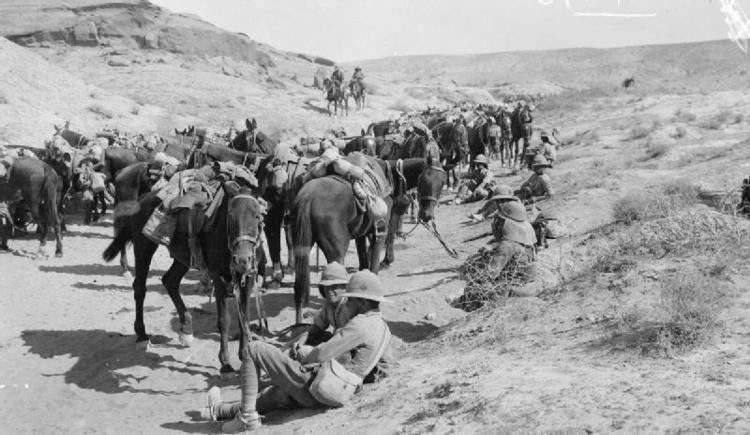Size Brigade | Allegiance British Crown Type Cavalry | |
 | ||
Active 10 March 1915 – March 1919 | ||
The 6th Indian Cavalry Brigade was a cavalry brigade of the British Indian Army that saw active service in the Indian Army during the First World War. It took part in the Mesopotamian campaign and was broken up soon after the end of the war.
Contents
History
On 21 February 1915, orders were sent from India to form a cavalry brigade in Mesopotamia. As a result, the 6th Indian Cavalry Brigade was formed with the 33rd Queen Victoria's Own Light Cavalry which had arrived in Mesopotamia in November 1914 with 6th (Poona) Division, 16th Cavalry and S Battery, Royal Horse Artillery which arrived earlier in the month, and 7th Hariana Lancers which departed India on 28 February to complete the brigade. It served in the campaign in Mesopotamia for the rest of the First World War.
Initially acting in an independent role, the brigade took part in the Battle of Shaiba (12–14 April 1915) where Major George Wheeler of the 7th Hariana Lancers won the Victoria Cross, and Operations in Persian Arabistan (21 April–18 June) including the Affair of Khafajiya (14–16 May). It then took part in the Battle of Es Sinn (28 September) that resulted in the capture of Kut al Amara. From 6 October, the brigade was placed under the command of the 6th (Poona) Division and with it took part in the advance on Baghdad including the Battle of Ctesiphon (22–24 November) and the subsequent withdrawal – Affair of Umm at Tabul (1 December) – back to Kut. It left the division there on 6 December before it got besieged.
From the start of 1916, the brigade was involved in efforts to raise the siege, including the Action of Sheikh Sa'ad (6–8 January), the Action of the Wadi (13 January), the First Attack on Hanna (21 January) and the Attack on the Dujaila Redoubt (8 March). These were in vain and the division surrendered on 29 April.
On 8 December 1916, The Cavalry Division was organized from the 6th and 7th Indian Cavalry Brigades, the latter having arrived from the Western Front in August. With the division, it took part in the Second Battle of Kut including the Advance to the Hai and Capture of the Khudaira Bend (14 December 1916–19 January 1917), the Capture of the Hai Salient (25 January–5 February 1917), the Capture of the Dahra Bend (9–16 February).
It then took part in the Pursuit to Baghdad and a number of actions later in 1917, notably the Second Battle of Ramadi (28–29 September). The Cavalry Division was dissolved on 8 April 1918, and the brigade continued to serve as an independent formation. It took part in the Affair of Kulawand (27 April), the Action of Tuz Khurmatli (29 April) and, finally, the Occupation of Kirkuk (7 May).
After the Armistice of Mudros, the brigade was not selected to form part of the occupation forces for Mesopotamia. In February and March 1919, the last of the units sailed for India and the brigade was no more.
Order of battle
The brigade commanded the following units during the First World War:
Commanders
The brigade had the following commanders:
